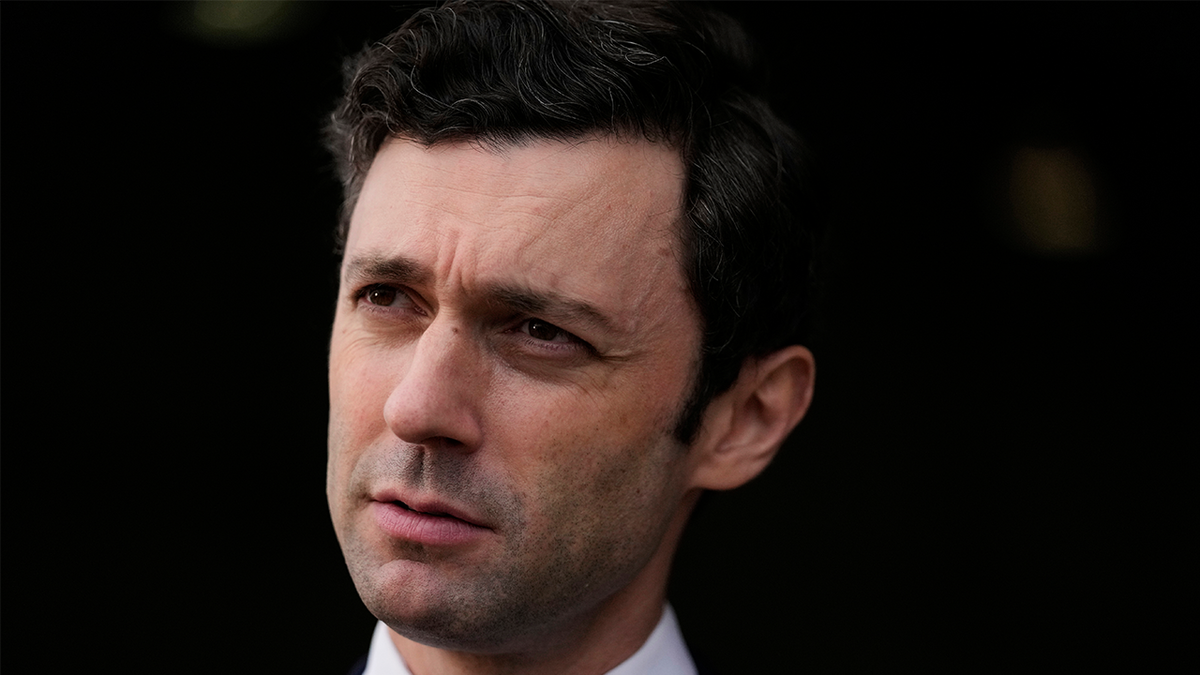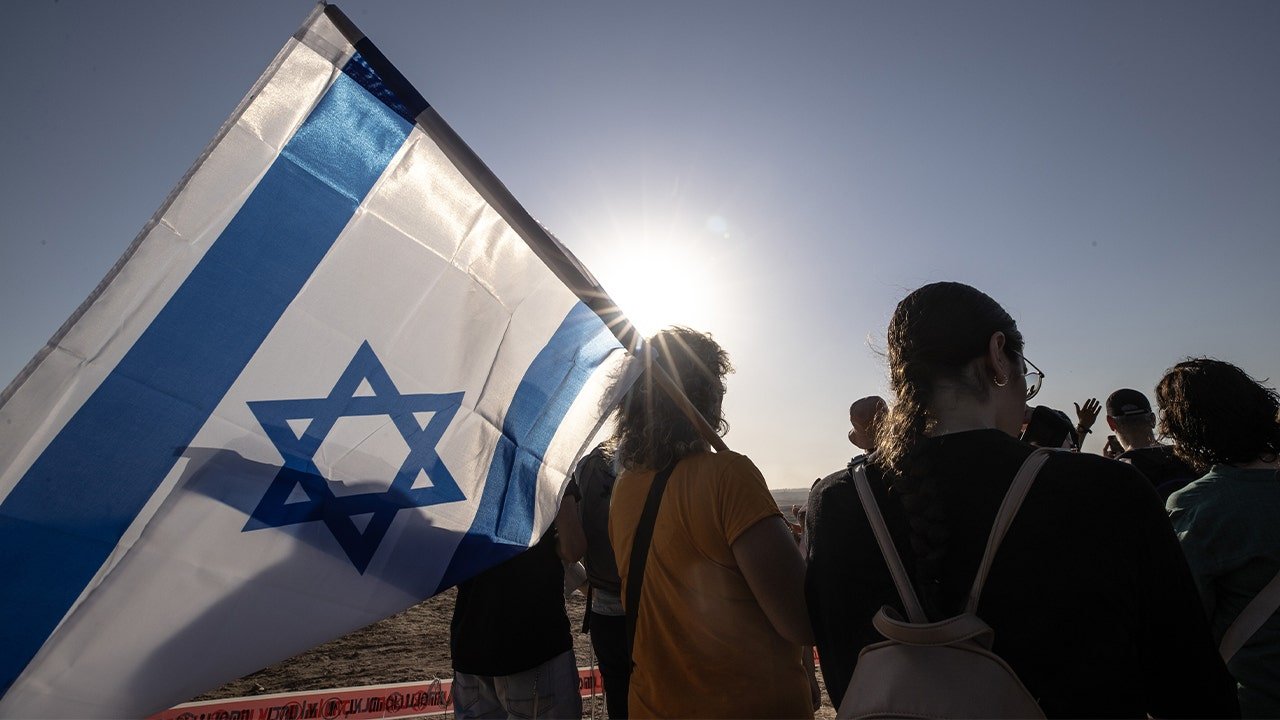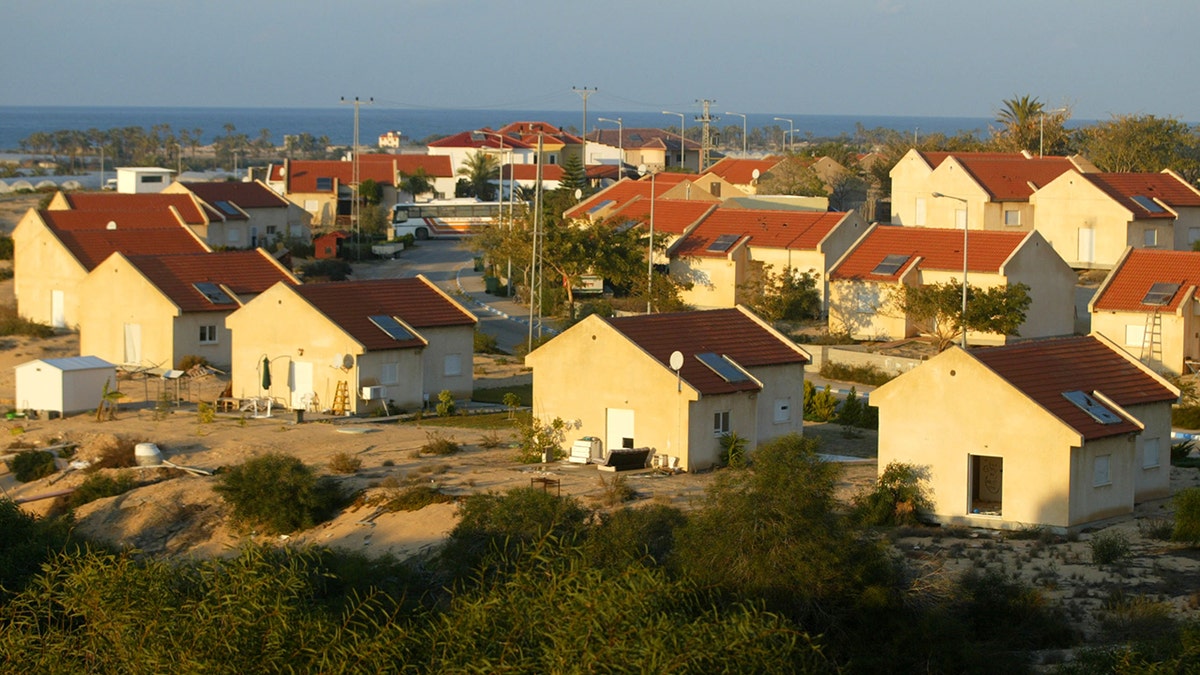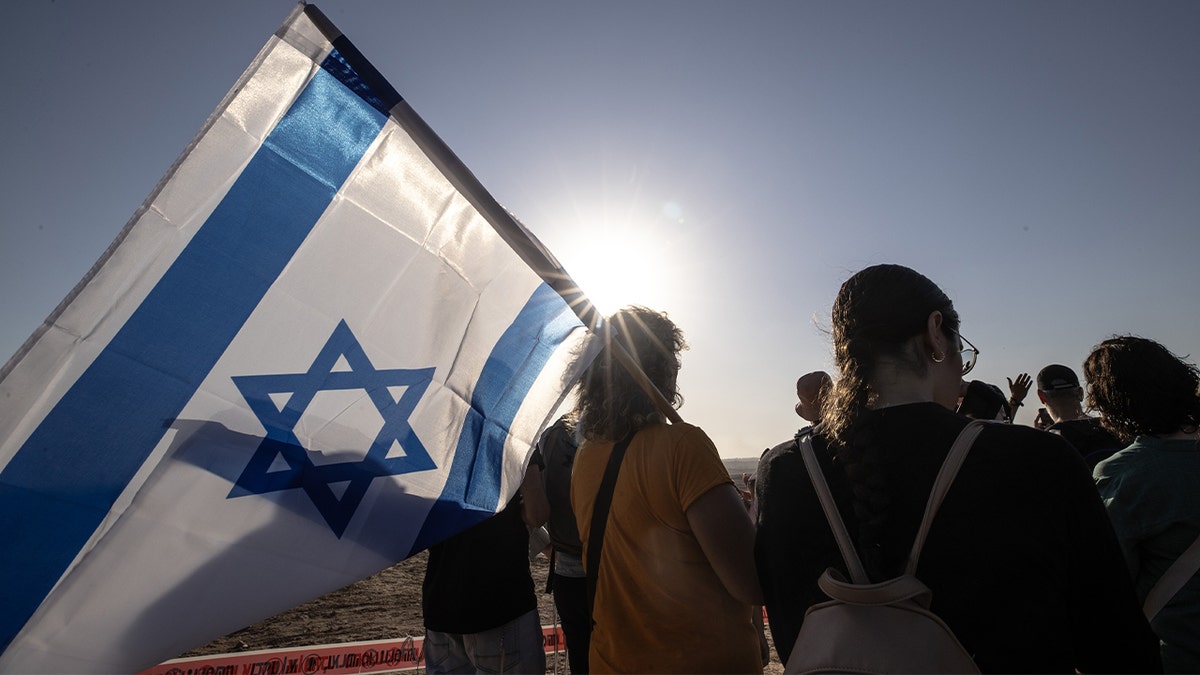INTERNACIONAL
Los cuatro tipos de tela que más abrigan del frío

La llegada del frío obliga a revisar el armario en busca de prendas capaces de ofrecer la mejor protección térmica. La elección del tejido resulta determinante para mantener el calor corporal durante los meses fríos, sobre todo invernales. Este período de transición no solo altera el entorno, sino que impacta actividades diarias y el estado de ánimo, fomentando una pausa en el ajetreo rutinario para adaptarse a la quietud y el resguardo que el frescor trae consigo.
Las mañanas se vuelven más frescas, incitando a desempolvar abrigos y bufandas que habían descansado durante meses en los armarios. Y la respuesta depende tanto del material como de la forma en que se combinan las prendas.
La elección de las telas adecuadas para la vestimenta se vuelve crucial. Algunas no solo protegen del frío, sino que también aportan comodidad y estilo a nuestra ropa diaria.
La lana es, sin duda, uno de los tejidos más antiguos y efectivos para protegerse del frío. Su uso se remonta al neolítico y su vigencia se mantiene hasta hoy por sus propiedades aislantes excepcionales. También permite la absorción de la humedad, aumentando la sensación de confort. Es un material resistente y flexible, ideal para prendas exteriores.
Sin embargo, un inconveniente común es que puede generar picores o alergias, lo que se puede mitigar usando una prenda de algodón como primera capa. Las variedades de lana más conocidas, como la cachemira, aportan mayor calidez y suavidad, aunque a un costo más alto.

La franela se destaca por su suavidad y capacidad para proporcionar calor, haciéndola ideal para prendas como camisas, pijamas y sábanas. Misteriosamente, muchas veces es confundida solo con la lana; sin embargo, hoy se mezclan varios materiales como algodón y poliéster para potenciar sus características de ligereza y calidez.
Esta versatilidad en los materiales hace que la franela sea muy popular en diversas aplicaciones, ofreciendo una sensación agradable al tacto y una buena protección contra las bajas temperaturas.

Con una textura distintiva de acanalado y rugosidad, la pana es otro clásico atemporal en la vestimenta invernal. Aunque está hecha mayormente de algodón, algunas variantes incluyen lana para mejorar su capacidad de aislamiento.
Es extremadamente popular en pantalones y algunas chaquetas, aunque históricamente su estilo ha sido objeto de crítica. A lo largo del tiempo, ha demostrado ser un fondo de armario invaluable por su durabilidad y resistencia al frío.

A pesar de cierta controversia por su capacidad de transpiración, los tejidos sintéticos, como el poliéster, el nylon y el polar, son muy eficaces para mantener el calor.
El polar, por ejemplo, es conocido por simular el tacto de la lana, ofreciendo un gran aislamiento a un costo menor y sin causar alergias. El nylon, por otro lado, es ideal para camisetas térmicas gracias a su delgadez y retención del calor.
Estos materiales son frecuentemente utilizados en ropa deportiva y térmica, y sirven como excelentes capas interiores que permiten mayor flexibilidad con el uso de prendas adicionales para otros propósitos exteriores.
Cada material presenta características específicas que influyen en su capacidad para proteger del frío. La lana, por ejemplo, es muy aislante y cómoda, pero puede causar picores o alergias en algunas personas. Según recomienda ABC, utilizar prendas finas y suaves, como una camisa de algodón, antes de vestir lana, puede ser efectiva. Pero su eficacia disminuye cuando se mezcla con otros materiales, por lo que las prendas 100% lana son preferibles para una mayor protección térmica.
La franela, gracias a su suavidad y ligereza, resulta cómoda y cálida, aunque su capacidad aislante depende de la proporción de lana o algodón en su composición. El paño, por su parte, ofrece aislamiento y ligereza, pero su eficacia varía según el grosor y el tipo de fibras empleadas.
El forro polar, al estar fabricado con poliéster, es ligero, cálido y de secado rápido, pero no se recomienda como primera capa debido a su baja transpirabilidad.
La pana, aunque es cálida y resistente, puede resultar menos flexible y su estética varía según las tendencias de moda.

De acuerdo con lo reseñado por 20minutos, la protección frente al frío no depende únicamente del tejido, sino también de la forma en que se combinan las prendas. La estrategia más eficaz consiste en utilizar tres capas diferenciadas. La primera debe ser ajustada, elástica, fina y transpirable, con el menor número de costuras posible para mayor comodidad. Materiales como el nylon o el algodón son adecuados para esta función.
La segunda capa, más suelta, debe estar compuesta por tejidos que retengan el calor y permitan la transpiración, como la lana, el polar o la franela. Esta capa actúa como barrera térmica y ayuda a mantener el calor generado por el cuerpo.
La tercera capa, en contacto con el exterior, incluye abrigos, parkas o prendas de plumas. Los materiales de esta capa pueden variar desde el paño hasta tejidos impermeables, cuya función principal es proteger del viento y la humedad.
En situaciones de humedad, lluvia o nieve, la elección de tejidos impermeables y de plumas resulta esencial. Dado que estos materiales ofrecen mejor protección frente a la humedad, aunque suelen ser menos transpirables. Por ello, se recomienda combinarlos con prendas interiores que permitan la evacuación del sudor, como la lana o el forro polar, para evitar la acumulación de humedad en el interior de la ropa.
Los tejidos impermeables protegen del agua y el viento, pero deben complementarse con capas transpirables para mantener el confort térmico.
INTERNACIONAL
El jefe del Ejército de Israel habló sobre una posible ofensiva total contra Hamas: “Estamos lidiando con asuntos de vida o muerte”

El jefe del Estado Mayor del Ejército israelí, Eyal Zamir, aseguró este jueves que la bautizada como operación Carros de Gedeón, la fase de la ofensiva israelí en Gaza que comenzó a mediados de mayo con el objetivo de ampliar el control militar del enclave palestino, está llegando a su fin tras lograr sus objetivos.
Las declaraciones de Zamir llegan en medio de una creciente tensión entre la cúpula militar y el primer ministro Benjamin Netanyahu por los planes del mandatario para tomar el control total de la Franja de Gaza, una propuesta que el Ejército rechaza categóricamente.
“Hemos cumplido e incluso superado los objetivos de la operación, y continuamos actuando para garantizar la seguridad a largo plazo de las comunidades del sur”, declaró Zamir durante una evaluación de seguridad matutina con la alta dirigencia militar, según comunicó el Ejército israelí.
El alto oficial militar añadió que las fuerzas armadas tienen “la capacidad de crear una nueva realidad de seguridad junto a la frontera, mientras mantenemos la presión sobre el enemigo. No volveremos a limitar nuestras respuestas. Eliminaremos las amenazas en su fase inicial”.

En un mensaje que parece dirigido directamente al gobierno, Zamir también defendió el derecho del Ejército a expresar su opinión profesional, incluso cuando esta difiera de las posiciones políticas. “Una cultura de desacuerdo es una parte inseparable de la historia del pueblo de Israel; es un componente vital de la cultura organizacional de las FDI, tanto interna como externamente”, declaró.
“Seguiremos expresando nuestras posiciones sin miedo, de manera sustancial, independiente y profesional”, agregó el jefe militar, en comentarios que fueron publicados horas antes de una reunión del gabinete de seguridad prevista para esta tarde, donde se discutirán los planes de ocupación de Gaza.
Fuentes en la Oficina del Primer Ministro han sugerido que si Zamir se opone al plan de ocupar Gaza, puede renunciar, según múltiples reportes que indican repetidos choques entre el jefe militar y el gabinete en días recientes.
Las fuerzas armadas israelíes son reacias a operar en lugares donde se encuentran retenidos los rehenes por temor a que los grupo terroristas palestinos en Gaza los ejecuten ante el avance de las tropas, como ya ocurrió a finales de agosto de 2024 con seis cautivos, cuyos cadáveres fueron hallados el 1 de septiembre.
Según la cadena pública israelí Kan, la cúpula militar cree además que ocupar toda Gaza provocará un aumento considerable de las bajas israelíes.
“No estamos lidiando con teoría; estamos lidiando con asuntos de vida o muerte, con la defensa del estado, y lo hacemos mientras miramos directamente a los ojos de nuestros soldados y los ciudadanos del país”, enfatizó Zamir durante la evaluación matutina. “Continuaremos actuando con responsabilidad, integridad y determinación, con solo el bien del estado y su seguridad ante nuestros ojos”.

La resistencia a los planes de Netanyahu no se limita al ámbito militar. El líder de la oposición israelí, Yair Lapid, advirtió este miércoles al primer ministro que la ocupación total de la Franja de Gaza “es una pésima idea”.
Tras reunirse con Netanyahu en Jerusalén, Lapid afirmó que le dijo: “Ocupar Gaza es una pésima idea. La mayoría de la gente no te apoya; al pueblo de Israel no le interesa esta guerra. Pagaremos un alto precio por ello”.
Lapid propuso una alternativa: “En lugar de una ocupación y una anexión de Gaza innecesarias, necesitamos atraer a Egipto a Gaza, para que haya otro gobierno que la gestione en vez de nosotros, y después centrarnos en lo importante, que es eliminar a Hamas”.
A pesar de la oposición militar y política, Netanyahu tiene previsto reunir este jueves por la tarde a su gabinete de seguridad para aprobar sus planes para tomar el control de toda la Franja.
El martes, tras una reunión de tres horas entre Netanyahu y Zamir, la oficina del primer ministro declaró que “las FDI están preparadas para implementar cualquier decisión tomada por el gabinete político y de seguridad”.
Zamir reafirmó el compromiso del Ejército con sus objetivos fundamentales: “Tenemos la intención de derrotar y colapsar a Hamas. Continuaremos actuando con nuestros rehenes en mente, y haremos todo para traerlos a casa”.
Middle East,Civil Unrest,TEL AVIV
INTERNACIONAL
4 key Senate seats Republicans aim to flip in 2026 midterms to expand their majority

NEWYou can now listen to Fox News articles!
Republican Sen. Tim Scott’s goal in next year’s midterm elections is not only to defend the GOP’s 53-47 margin in the Senate, but to expand the majority.
Scott, the conservative senator from South Carolina, told Fox News Digital soon after taking over late last year as chair of the National Republican Senatorial Committee (NRSC) that he aimed to increase the GOP’s control in the chamber to at least 55 seats.
And he’s standing by his goal.
«The bottom line is, I believe that we can defend our current seats while adding at least two more seats to our numbers,» the NRSC chair told Fox News Digital earlier this year.
THIS REPUBLICAN JUST JUMPED INTO BATTLEGROUND GEORGIA’S HIGH-PROFILE SENATE RACE
Sen. Tim Scott spoke to a South Carolina GOP delegation breakfast on Wednesday (pictured speaking on the RNC stage). (Getty Images)
Senate Republicans enjoyed a favorable map in the 2024 cycle as they flipped four seats from blue to red to win back the majority.
But the party in power—clearly the Republicans right now—traditionally faces political headwinds in the midterm elections. Nevertheless, a current read of the 2026 map indicates the GOP may be able to go on offense in some key states.
In battleground Georgia, which President Donald Trump narrowly carried in last year’s White House race, Republicans view first-term Sen. Jon Ossoff as the most vulnerable Democrat incumbent up for re-election next year.
TRUMP-BACKED RNC CHAIR JUMPS INTO THE NATION’S ‘MARQUEE’ SENATE RACE
They’re also targeting battleground Michigan, where Democratic Sen. Gary Peters is retiring at the end of next year, and swing state New Hampshire, where longtime Democratic Sen. Jeanne Shaheen decided against seeking a fourth six-year term in the Senate.
Also on the NRSC’s target list is blue-leaning Minnesota, where Democratic Sen. Tina Smith isn’t running for re-election.
At the top of their list is Ossoff, who narrowly won election to the Senate in a January 2021 runoff contest.

Republicans view Sen. Jon Ossoff as the most vulnerable Democrat running for re-election in the 2026 midterm elections. (AP)
But Ossoff is off to a very hot fundraising start, and a GOP primary in Georgia between Reps. Mike Collins and Buddy Carter, and former college and professional football coach Derek Dooley, is starting to turn combustible.
DNC CHAIR TELLS FOX NEWS DIGITAL DEMOCRATS HAVE HIT ‘ROCK BOTTOM’ – HERE’S HIS PLAN TO REBOUND
Republicans are also confident they can flip Michigan, another battleground Trump narrowly carried last November.
Former Rep. Mike Rogers, the 2024 GOP Senate nominee who lost last year’s race by a razor-thin margin, has at this point cleared the Republican primary field, thanks in great part to Trump’s endorsement.

Former Rep. Mike Rogers, a Republican Senate candidate in Michigan for a second straight election cycle, is interviewed by Fox New Digital in Grand Rapids, Michigan on April 2, 2024. (Paul Steinhauser – Fox News )
Democrats, meanwhile, have a very competitive primary on their hands. The primary race includes three well-known Democrats: Rep. Haley Stevens, state Sen. Mallory McMorrow and former gubernatorial candidate Abdul El-Sayed, who enjoys the backing of progressive champion Sen. Bernie Sanders of Vermont.
With Shaheen, who made history as the first woman in the nation’s history to win election as a governor and a senator, out of the running in New Hampshire, the GOP is hoping to win a Senate election in the Granite State for the first time in 16 years.

Democratic Sen. Jeanne Shaheen of New Hampshire, seen at a policy event in Concord, N.H. on Oct. 22, 2024, isn’t seeking a fourth term in the Senate when she’s up for re-election in 2026. (AP Photo/Steven Senne)
They’re encouraged by the gains Trump made in New Hampshire in last year’s election, as he improved on his showing from four years earlier and came close to carrying the state.
But four-term Rep. Chris Pappas’ announcement in early April that he would run to succeed Shaheen has cleared the Democratic primary field, as of now, of any potential rivals for the party’s Senate nomination.
Meanwhile, a Republican primary in the state—where the GOP hasn’t won a Senate race in 15 years—is heating up between former Sen. Scott Brown and state Sen. Dan Innis, with the possibility of more candidates entering the race.
In Minnesota, the leading candidates in the Democratic primary to succeed Smith are Lt. Gov. Peggy Flanagan and Rep. Angie Craig.
Former professional basketball player Royce White, who won the 2024 Senate nomination in Minnesota, and former Navy SEAL Adam Schwarze are currently running in the GOP primary. But another Republican Senate hopeful may soon enter the field.
While Republicans will work to defy political history in next year’s midterms, they point to the Democratic Party’s current brand issues.
CLICK HERE TO GET THE FOX NEWS APP
«Democrats have historically low approval ratings because candidates like Jon Ossoff and Chris Pappas keep prioritizing radical policies like men in women’s sports, protecting sanctuary cities for criminal illegal aliens, and raising taxes on working families,» NRSC communications director Joanna Rodriguez argued in a statement to Fox News.
And Rodriguez touted that «Republicans are delivering on policies that keep Americans safe and let families and workers keep more of their hard-earned paychecks. Voters will reward us for it in 2026.»
midterm elections,elections,senate elections,republicans elections,georgia,michigan,new hampshire,minnesota
INTERNACIONAL
Netanyahu’s security cabinet to meet on Gaza war, as some in Israel call to resettle enclave

NEWYou can now listen to Fox News articles!
Israeli Prime Minister Benjamin Netanyahu is set to convene his high-level security cabinet on Thursday to discuss expanding the war against Hamas, including the potential full military occupation of the Gaza Strip.
The prospect comes against the backdrop of the 20th anniversary of Israel’s full disengagement from the enclave, as calls for resettlement — once confined to the political fringes — have entered the mainstream, including within the government, particularly in the wake of Hamas’s Oct. 7 massacre.
Rebuilding Jewish communities in Gaza would be «a historic correction to a national injustice,» Yitzhak Wasserlauf, Israel’s minister for the Development of the Periphery, the Negev and the Galilee, told Fox News Digital.
FOX NEWS GETS INSIDE LOOK AT GAZA HUMANITARIAN SITUATION AS ISRAEL WEIGHS NEXT STEPS
Israeli Prime Minister Benjamin Netanyahu stands on a platform overlooking the Gaza Strip during his first visit to Kibbutz Nir Oz since the Oct. 7, 2023 attack by Hamas terrorists where a significant number of this community were killed or captured, near the Israel-Gaza border in southern Israel, on Thursday, July 3, 2025. (AP Photo/Leo Correa)
«Expelling Jews from their homes in their own country was a strategic and moral mistake that led to the rise of an Islamist terrorist regime called Hamas,» he said. «That mistake enabled Hamas to fire relentless rockets and ultimately carry out the October 7 massacre — which included murder, rape, abuse, looting, and, of course, the kidnapping of soldiers and civilians.»
Wasserlauf invoked the bloc of 17 Israeli communities, collectively known as Gush Katif, which was established in Gaza after the 1967 Six-Day War. In August 2005, as part of Israel’s unilateral disengagement, the government forcibly removed approximately 8,600 Jewish residents from the area.
He said reapplying Israeli sovereignty «would send a clear message: whoever strikes us loses the ground beneath his feet. Only in this way can true deterrence be achieved,» Wasserlauf continued. «We need to create facts on the ground. There must be no agreements with terrorists. Settlement in Gaza must, at the very least, be the price that reminds everyone terrorism does not pay.»
From 1948 to 1967, the Gaza Strip was under Egyptian occupation. After Israel captured the territory in the 1967 Six-Day War, it remained under full Israeli control until 1994, when administrative responsibility was transferred to the Palestinian Authority under the Oslo Accords — paving the way for Yasser Arafat’s return from exile in Tunis.

Hamas terrorists emerge from the shadows as they surround Red Cross vehicles. (TPS-IL)
In 2005, Israel evacuated all military personnel and civilian communities from Gaza. Shortly thereafter, Hamas won the Palestinian legislative elections and staged a violent coup to overthrow the Palestinian Authority and seize control of the Strip.
A year after Israel unilaterally disengaged from Gaza, evacuating all military personnel and civilian communities, Hamas won the Palestinian legislative elections and, shortly thereafter, staged a violent coup to overthrow the Palestinian Authority and seize control of the Strip.
Wasserlauf argued that critics of the disengagement had long warned that any concession of land would only embolden terrorists. These warnings, he said, were ignored, but ultimately proven correct by the events that followed.
He acknowledged that renewed settlement in Gaza would likely trigger political backlash both domestically and abroad. «The countries that support us will stand with us, and those that consistently oppose us will remain against us … I remind you that there were countries that urged us not to strike Iran, despite its race toward nuclear weapons and its explicit goal of destroying Israel.»
BROTHER OF ISRAELI HOSTAGE URGES UN TO ACT AFTER VIDEO SHOWS HAMAS STARVING AND TORTURING CAPTIVES

The Israeli settlement of Pa’at Sadeh is seen Dec. 26, 2004 in the southern Gaza Strip.
Brig. Gen. (Res.) Amir Avivi told Fox News Digital that Israel’s core national security doctrine of deterrence is being tested by jihadist groups like Hamas, which operate according to a radically different set of rules.
Avivi, founder and chairman of the Israel Defense and Security Forum, said that Israel’s approach to Gaza may ultimately hinge on U.S. support, especially from President Donald Trump. «If the U.S. president advocates for massive relocation and taking control of Gaza to implement his own vision, it would suggest some kind of basic understanding between the two sides,» Avivi said.
He estimated that the Israel Defense Forces (IDF) currently controls about 75% of Gaza, with past decisions largely driven by military considerations. However, he said that the remaining 25% of the territory involves broader strategic decisions, shaped by how Israel and the United States view the future of the area, including Jewish settlement.
Maj. Gen. (Res.) Yaakov Amidror, a former national security adviser, told Fox News Digital that resettling Gaza should not be part of Israel’s agenda.

Chief of the General Staff LTG Eyal Zamir conducted a field tour in the Rafah area of the Gaza Strip. Zamir spoke with soldiers and was presented with defensive preparations and operational plans. (IDF)
«We have one mission now, and that is to dismantle Hamas,» he said. «We’ll talk about the day after, the day after. To bring back any level of normalcy to Gaza, we need to find partners — and I don’t know who those partners would be if we settle in Gaza.»
SHE FED 100K GAZAN FAMILIES FOR FREE – NOW TERRORISTS AND LOCAL MERCHANTS WANT HER DEAD
Amidror, a distinguished fellow with the Jewish Institute for National Security of America, said that Israel must in the long-term remain solely responsible for security in Gaza, citing past failures when control was transferred to the Palestinians after the Oslo Accords. He argued that reestablishing settlements could complicate that mission, asserting that security should remain solely in the hands of the IDF.
Religious Zionism lawmaker Simcha Rothman told Fox News Digital that «If we are trying to achieve peace, any agreement or situation in which Jews cannot live in their ancient homeland is not just,» but acknowledged it is not one of Israel’s official war objectives. «While resettling Gaza is the right thing to do, it is not part of the current effort.»
Maj. Gen. (ret.) Amos Yadlin, former head of IDF Military Intelligence, reiterated that resettling Gaza is not part of the Israeli government’s declared war objectives.
«If Israel needs to reoccupy Gaza militarily, it should be to destroy Hamas and bring back the hostages — not to annex Gaza as part of Israel. There are 2 million Palestinians in Gaza, maybe more,» Yadlin, who is currently president of MIND Israel, told Fox News Digital.

Memorials at the site of the Oct. 7 Hamas terror attack on the Supernova music festival near Kibbutz Re’im, Israel, on Monday, May 27, 2024. (Kobi Wolf/Bloomberg via Getty Images)
«Israel does not want to rule over them or provide for all their needs. It would cost billions and alter the demographic balance. This idea is being pushed by right-wing elements in the government, and even the prime minister and his party do not support it,» he said.
Daniella Weiss, general director of the Nachala Settlement Movement, told Fox News Digital that the aftermath of Hamas’s October 7 attack signals the start of a new era. «I think we should go much further than what existed in 2005. Back then, we were 10,000 people in Gaza. Our movement, Nachala, has proposed a plan for 1.2 million Jews in Gaza,» Weiss said.
CLICK HERE TO GET THE FOX NEWS APP

Israelis march from Sderot toward the northern border of Gaza, calling for the re-establishment of settlements in the territory, on July 30, 2025 in Israel. (Mostafa Alkharouf/Anadolu via Getty Images)
She said her organization is already taking tangible steps to begin the process, «We’ve organized six groups of young families—more than 1,000 families—who are willing to move to Gaza now,» she said.
While Weiss expressed regret that the Israeli government has not included Jewish resettlement in its official war objectives, she insisted that in Israel’s democracy, public pressure can influence government policy.
«The basic truth is that the Gaza area is part of the western Negev,» she said. «Historically, it was part of the area of the tribe of Yehuda. To turn your back on that is wrong.»
israel,conflicts,middle east,terrorism

 CHIMENTOS2 días ago
CHIMENTOS2 días agoMalas noticias para Wanda Nara: por qué la bajaron misteriosamente de MasterChef: «No va a salir este año»

 DEPORTE2 días ago
DEPORTE2 días agoEl Como de Fàbregas, el nuevo rico de Italia

 POLITICA2 días ago
POLITICA2 días agoSebastián Pareja justificó el armado de listas de LLA en la Provincia: “El desafío era dar una opción diferencial”



















